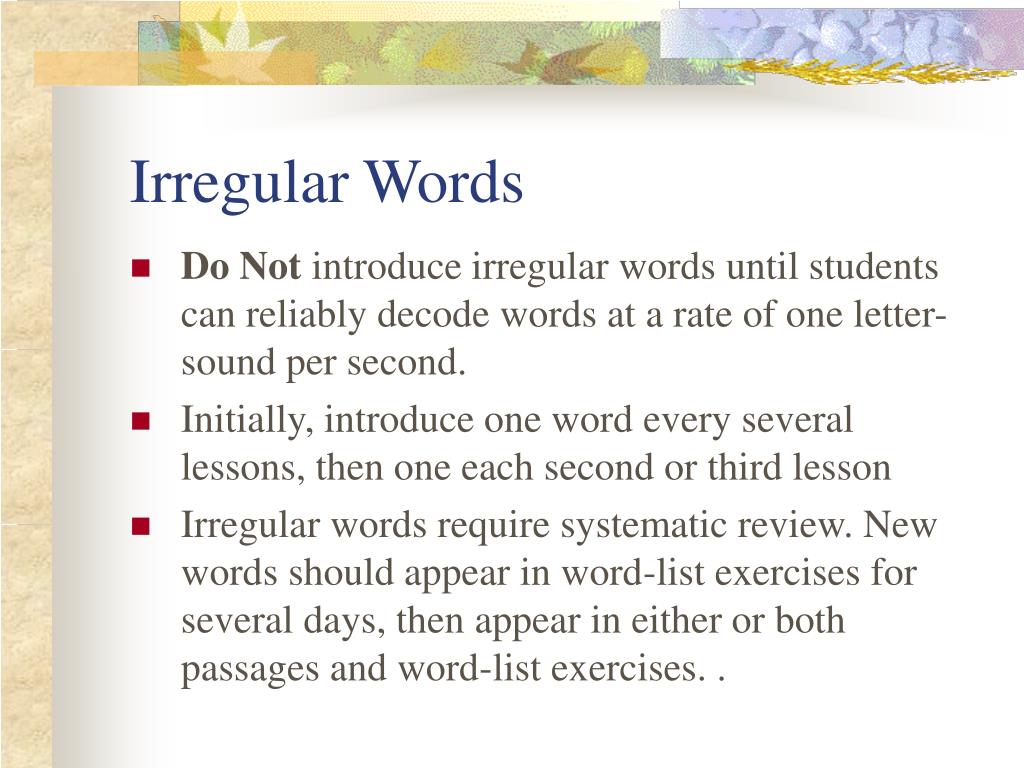
Engaging children in regular activities that encourage reading and writing are ways that families can help their children acquire important basic skills and also reinforce what they are learning at school. What do Phonics and the Alphabetic Principle Development look like in the home?Ĭhildren’s earliest exposure to literacy begins in the home, and this early exposure influences children’s overall literacy development. Include alphabetic knowledge, phonemic awareness, vocabulary development, and the reading of text, as well as systematic phonics instruction.Can be adapted to the needs of individual students, based on assessment.Help students apply what they learn about sounds and letters to their own writing.Help students apply their knowledge of phonics as they read words, sentences, and text.

Help students understand why they are learning the relationships between letters and sounds.
#Alphabetic principle how to
Instruct students in how to relate letters and sounds, how to break spoken words into sounds, and how to blend sounds to form words.Providing students with frequent opportunities to apply what they are learning about sound-symbol relationships in their writing, and encouraging them to use their knowledge to spell words and write stories is another way to help students internalize these skills (Armbruster, Lehr, Osborn, & Adler, 2003).Īccording to (Armbruster, Lehr, Osborn, & Adler, 2003, p. Another way to encourage the development of phonics is to ensure that students have access to books and stories that contain large numbers of words that children can decode by applying sound-symbol relationships that they are learning. We should also provide multiple opportunities for students to practice and apply their knowledge of these relationships through reading and writing. Since children benefit most from systematic and explicit instruction of phonics, teachers should incorporate direct instruction of sound-symbol relationships of both consonants and vowels in a clearly defined manner and sequence. Systematic and explicit instruction of phonics has been shown to improve children’s word recognition, spelling, and reading comprehension (Armbruster, Lehr, Osborn, & Adler, 2003). “Unlike spoken language, young children will not simply absorb skills through exposure,” (Fisher, Frey, & Hattie, 2016, p. What do Phonics and the Alphabetic Principle Development look like in the classroom?

For example, the word t wo confuses many, but when studies alongside words like t wenty and t wice the "w" in the word t wo doesn't look so out of place anymore. So, while many believe that English words can be random and inconsistent, the truth is that almost all words in the English language follow patterns that we can use to help us understand why some of those irregular spellings exist. For example, recognizing the sound of /ph/ in phone can help that student to decode words like photogra ph, phase, gra ph, or al phabet. In time, and with practice, children can recognize irregular spelling patterns in other words and transfer that knowledge to solve other words. As children learn words with irregular spellings, children begin to recognize the regular sound-symbol relationships within these words that help them to solve the word. “Once children learn, for example, that phoneis spelled this way rather than foan, their memory helps them to read, spell, and recognize the word instantly and more accurately than they could read foan,” (Armbruster, Lehr, Osborn, & Adler, 2003, p. 46).Īlthough the English language seems to have many irregularities and spellings that are inconsistent with the alphabetic principle (predictable sound-symbol relationships), phonics instruction that is structured, direct, and explicit (often referred to as synthetic phonics) leads children to internalize and master the system that helps them learn how to read words. “Phonics instruction is thought to establish and strengthen the brain structures that will form the phonological loop that links the apparatus responsible for processing the sounds of language with the long-term memory needed to sustain meaningful reading,” (Fisher, Frey, & Hattie, 2016, p. A good grasp of phonics can both help students recognize frequently used words (sight words) automatically, and to use individual sound-symbol relationships to solve or decode unfamiliar words.


Once children are familiar with sound-symbol correspondence, they can use their knowledge of these relationships to read and write words. Teaching phonics helps children recognize the systematic and predictable relationships between letters (graphemes) of printed text and the individual sounds (phonemes) of oral language, also known as the alphabetic principle. What are Phonics and the Alphabetic Principle?


 0 kommentar(er)
0 kommentar(er)
